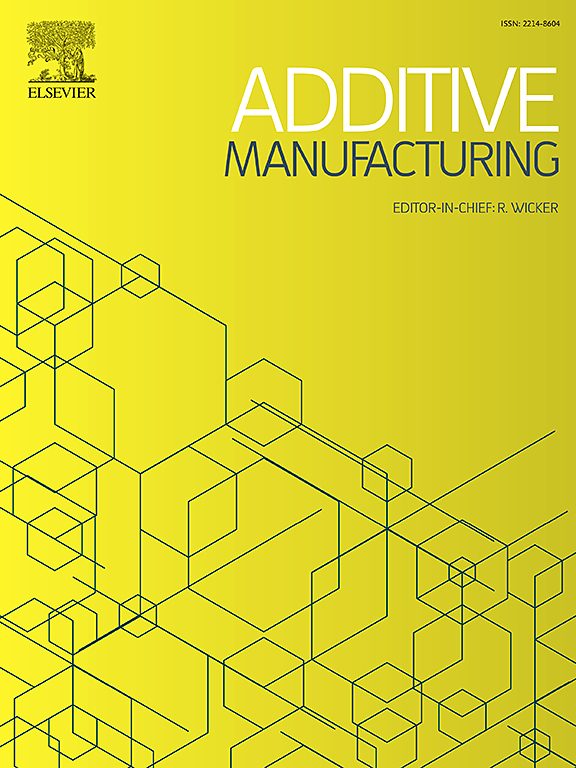Direct ink writing of alumina-fiber reinforced alumina-matrix composites: Processing and mechanical behavior
IF 10.3
1区 工程技术
Q1 ENGINEERING, MANUFACTURING
引用次数: 0
Abstract
Additive manufacturing offers new opportunities for fabricating intricately shaped fiber-reinforced ceramic matrix composites, but challenges remain, such as improving fiber content, eliminating defects to enhance strength, and preserving characteristic toughening mechanisms. In this study, we explore the use of direct ink writing (DIW) for shaping alumina-matrix composites reinforced with short alumina fibers, addressing key challenges. We developed hydrogel-based inks for printing fiber-reinforced ceramics and demonstrated the printability of intricately shaped composites. The inclusion of fibers reduced the yield stress, facilitating extrusion. Additionally, DIW promoted fiber alignment, allowing for precise control over fiber orientation. However, the formation of a rigid fiber network at high concentrations negatively impacts printability and limits fiber content. Furthermore, air entrapment in the fiber network and the use of low sintering temperatures (to avoid fiber damage) result in poor densification and modest mechanical properties. To address these issues, a sol-gel infiltration process was used post-printing, resulting in a 120 % increase in strength and an 88 % increase in toughness. The composites exhibited gradual failure, attributable to a combination of damage formation mechanisms, including matrix microcracking, crack deflection along the fiber-matrix interface, acoustic energy dissipation upon fiber failure, and frictional work during fiber pullout. A maximum fiber content of 35 wt% of the solid content was achieved, and the final composites exhibited a flexural strength of 103.5 MPa, a crack initiation toughness (KIC) of 2.2 MPa·m¹/², and a crack propagation toughness (KJ) of 6 MPa·m¹/².
求助全文
约1分钟内获得全文
求助全文
来源期刊

Additive manufacturing
Materials Science-General Materials Science
CiteScore
19.80
自引率
12.70%
发文量
648
审稿时长
35 days
期刊介绍:
Additive Manufacturing stands as a peer-reviewed journal dedicated to delivering high-quality research papers and reviews in the field of additive manufacturing, serving both academia and industry leaders. The journal's objective is to recognize the innovative essence of additive manufacturing and its diverse applications, providing a comprehensive overview of current developments and future prospects.
The transformative potential of additive manufacturing technologies in product design and manufacturing is poised to disrupt traditional approaches. In response to this paradigm shift, a distinctive and comprehensive publication outlet was essential. Additive Manufacturing fulfills this need, offering a platform for engineers, materials scientists, and practitioners across academia and various industries to document and share innovations in these evolving technologies.
 求助内容:
求助内容: 应助结果提醒方式:
应助结果提醒方式:


